Vaping has been introduced as a “less harmful” alternative to conventional cigarettes, or a way to quit smoking. However, emerging evidence indicates these devices come with their own risk, and new hazards linked to vaping are being discovered.
New “cig” on the block
Vaping products are known by several names, e.g. vapes, e-cigarettes, vape pens, tank systems, modes or electronic nicotine delivery systems (ENDS). They are battery-powered devices which heat a liquid to produce an aerosol/vapour that is inhaled. Their use is known as “vaping” or “JUUL-ing” (named after a popular vaping brand).
Key dangers at a glance
- Most vaping liquids contain nicotine, which is highly addictive and harmful to the developing brain.
- Second-hand vapour is unsafe for babies, kids, young adults up to their mid-twenties and pregnant women.
- Brain development begins with unborn babies in the womb and continues up to the age of 25 years. The brain of anyone across this wide age range can be harmed through exposure to nicotine.
- The harmful impact of nicotine exposure to a developing brain remains even after the person stops vaping.
- Vaping liquids also contain a number of other chemicals. Some of these can cause cancer and severe or permanent damage to the lungs.
- The US Centers for Disease Control and Prevention (CDC) warns that young people who vape are more likely tosmoke cigarettes in the future, and are likely to become heavy, frequent smokers.
- Another study on university students showed that young people who vape are at higher risk of becoming addicted to other substances, such as illegal drugs.
E-cigarettes or vapes: what’s the difference?
Technically, vapes and vape fluids are supposed to be nicotine-free while e-cigarettes contain nicotine, however the reality is different. Research by CDC found that 99% of vape liquids contain some amount of nicotine, even those labelled “0% nicotine”.
JUUL, one of the top-selling brands of e-cigarettes popular among teenagers and young adults in the U.S.A., contains high levels of nicotine – a single pod may contain the same amount of nicotine found in 20 cigarettes.
According to Dr Yen Teck Hoe, nicotine is an addictive drug present in tobacco products and also in e-cigarettes and a number of vape liquids. Nicotine is what “hooks” these users to vaping.
The consultant psychiatrist points out, “The brain continues to develop from infancy up to the age of 25 years. Nicotine is harmful to the developing brain. It can affect learning and make it difficult to concentrate. It affects mood and makes it difficult for a teenager to control impulses.
Nicotine also alters the way the brain develops and functions, and can increase one’s tendency to become addicted to other substances. This disruption can leave a lasting impact, even after a person stops vaping or smoking.
Signs of nicotine withdrawal
According to Dr Yen, children are more susceptible to nicotine withdrawal and may manifest the following behaviour if they have missed their last ‘hit’:
- Irritability, frustration and anger
- Strong craving
- Anxiety and/or depression
- Difficulty concentrating
- Impaired performance
- Mood swings
What do vape liquids contain?
Datuk Dr Zulkifli Ismail explains “Studies looking at more than 120 different types of vaping refill liquids have found that all of them contain substances considered hazardous to health. With no proper regulation or requirement to control the contents or product information labels, it is difficult to know the exact components of each individual vape liquid.”
The Chairman of Positive Parenting Programme also adds, “Many vape manufacturers try to make their products more enticing with flavours. However, ingredients that are safe to eat can be harmful when inhaled into the lungs.”
Flavour-enhancers such as diacetyl cause inflammation and scarring of the lungs that result in severe damage. Furthermore, vape liquids can cause dryness and irritation to the upper airways. Regular, frequent use results in itchiness, sneezing, nosebleeds, dry cough and sore throat. People with respiratory diseases such as asthma, may find their condition worsens or symptoms are aggravated.
Other harmful components detected in vape liquids include cancer-causing chemicals such as formaldehyde and heavy metals such as nickel, tin and lead. Some preparations may also contain tetrahydrocannabinol (THC), which is the main psychoactive compound in cannabis or marijuana that produces the high sensation.
“We still do not know the full extent of harmful effects caused by vaping. Vape liquids are recent products compared to conventional cigarettes. To those who cite a lack of evidence, note that this does not mean it is harmless; it will take the scientific community time to accumulate evidence of long-term harm, especially with so many vaping liquids containing substances that are known to be harmful,” stresses Datuk Dr Zulkifli.
Red alert!
E-cigarette or vaping product-use associated lung injury (EVALI) is a health concern. In 2019, the CDC received over 2500 reports of people hospitalised in the US for severe lung injury following recent use of vaping products and e-cigarettes.
Some of these were healthy individuals, who later suffered severe, life-threatening lung injury and had to be placed on a ventilator. Deaths have also been reported. Public health officials in the U.S. have made recommendations against the use of e-cigarettes.
The vapour from vapes will affect anyone in the vicinity to any of its harmful effects. One also runs the risk of poisoning if vape liquids are swallowed, or when spilt liquids are breathed or absorbed through the skin.
Worst of all, explosions and fires have been caused by vaping devices, leading to burns, severe personal injuries, and even death in a few extreme cases.
Targeting teens
Dr Mary Marret highlights, “Although vaping products were originally developed as an aid for adults to give up smoking, they are now being packaged and promoted to attract a younger group of customers such as teenagers and young adults. The tactics used are similar to what was used to promote cigarettes in the past. Nowadays there are regulations prohibiting the advertising of tobacco and its related products.”
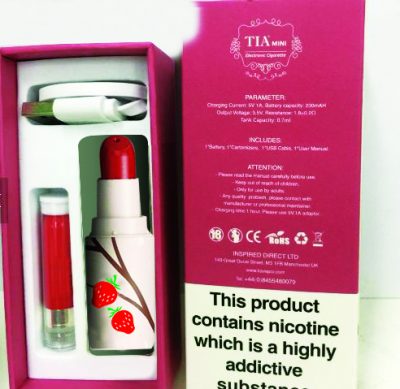


The consultant paediatrician went on to add that young people are curious and easily attracted by ‘tasty’ flavours such as fruit and candy. Vaping products also come in trendy, eye-catching shapes and designs, such as pens, watches, USB drives, lipstick or eyeliner. These are small and can be carried around or hidden without attracting attention.
Unlike cigarettes, regulations restricting the sale of vaping products have not been introduced yet. There are few physical shops selling vapes and its related products in Malaysia, and the sale of vape liquids containing nicotine is also not permitted. However, enforcement is uncertain and these products are easily available online.
Vaping vs conventional cigarettes: the truth
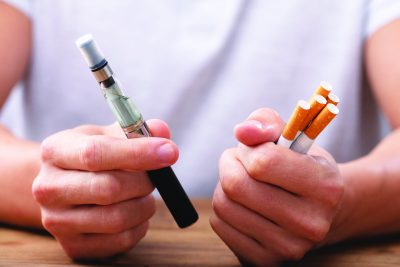
Vaping has been promoted as a way for cigarette smokers to quit smoking. Evidence that vaping is an effective way to quit smoking is rather limited. Research indicates that more people who try this route either combine vaping with smoking or switch to vaping, and only a few completely quit. It would be better to promote other more effective methods to quit smoking which do not expose smokers and bystanders to harmful toxins.
However, a number of studies show that many non-smokers (especially teens and young adults) who started vaping gradually progress to smoking cigarettes. Research shows that teenagers who start with vaping end up smoking a higher number of cigarettes more frequently. Youth who begin with vaping are also more prone to become addicted to other substances, such as illegal drugs.
Dr Mary cautions that many have the wrong impression that vaping is ‘safe’ because of the way it has been marketed. While not as harmful as conventional cigarettes, they may contain highly addictive nicotine, and other substances which are hazardous to health.
The role of parents
“Parents should be good role models – children are less likely to form the habit if they grow in an environment with no one who smokes or vapes. If you smoke or vape, you are exposing yourself and your family to harm,” reminds Datuk Dr Zulkifli.
Be vigilant and monitor your children’s activities and be familiar with their friends. They may be easily influenced to start the habit if their friends are doing it. Look out for tell-tale signs that they might be vaping (see box), as well as signs of nicotine withdrawal.
The Malaysian government is working out stricter laws and regulations on e-cigarettes or vape products. In India, their government has banned the sale of e-cigarettes in response to the vaping “epidemic” among Indian youths. To help protect our children, we need to support laws and policies that restrict access and advertising of these products.
He also suggests, “As parents, we should not wait for new laws to be introduced, but start by educating our children. Speak to your children about the dangers of vaping and smoking. Start early, when they are in pre-school and primary school. If you smoke or vape and have trouble quitting, do seek professional help and advice.”
Tell-tale signs of a vape user
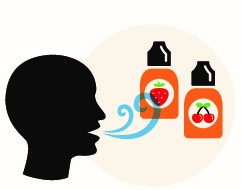
- Sweet smell: Many flavoured vape liquids have a strong, sweet smell that tends to linger on the breath, hair, skin and clothes.
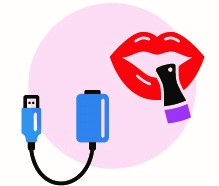
- Out-of-place pen, USB drive, watch, lipstick: If your child always carries them around even when they are not needed, it could be a vaping device disguised as an everyday object.
- Increased thirst and/or nosebleeds: Vaping dries the mouth and nose, making users thirsty all the time. They may also have frequent nosebleeds. Other signs include frequent light-headedness, dizziness, and increased tiredness and sleepiness.

- No more coffee: Some vape users become sensitive to coffee. If a coffee-lover starts to avoid coffee, it could be a sign that he is vaping.
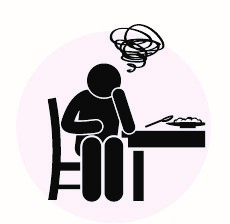
- Decreased appetite: Reduced appetite and weight loss could be the effect of nicotine.
- Strange possessions or trash: Keep a lookout for unusual items in your child’s possession or in household trash – unbleached, organic cotton balls, thin metal coils, discarded atomisers or pods and disposable vapes. The presence of rechargeable batteries (not the usual AA or AAA types) or chargers that your child cannot explain may also be a sign.






Comments